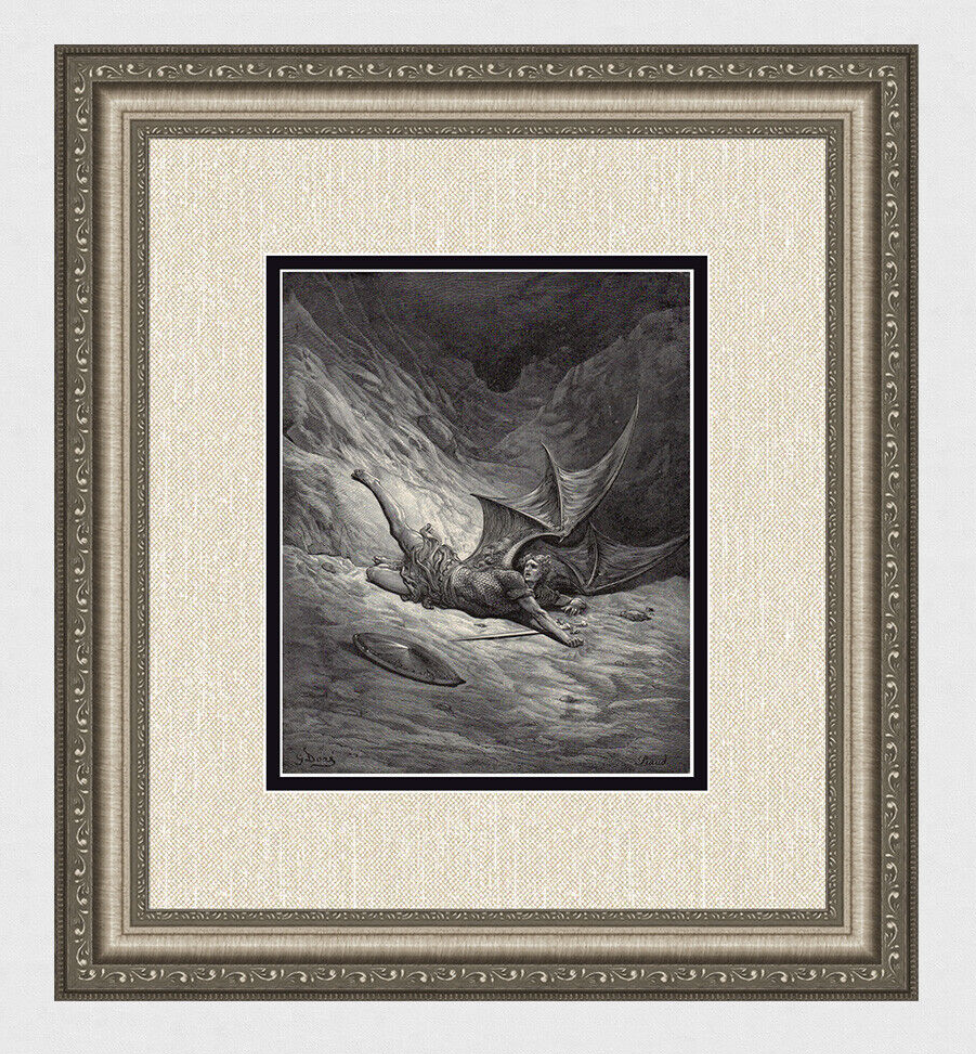𝐈 𝐧𝐨𝐰 𝐨𝐰𝐧 𝐚𝐧 𝐨𝐫𝐢𝐠𝐢𝐧𝐚𝐥 𝐆𝐮𝐬𝐭𝐚𝐯 𝐃𝐨𝐫𝐞 𝐩𝐢𝐞𝐜𝐞.
- Tommy Bedward
- Aug 29, 2023
- 3 min read
Updated: Jul 5, 2024
I just purchased my first real piece of art, this signed Gustav Dore Piece is now mine, I can't believe it. There's not much more to say other than the description of the piece is below and I'm extremely luckily and thankful I'm in a position to be able to have such an incredible bit of history.
Hail Satan.


Artist: Gustave Doré (Paul Gustave Louis Christophe Dore) (French, 1832-1883)
Title: Satan first feels Pain
Medium:Antique woodcut wove paper after the original by master wood engraver Antoine Alphée Piaud (French, 1830-1852 active c.).
Year: c. 1880
Signature:Signed in the plate, lower left.
Condition:Excellent
Dimensions:Image size 7 3/4 x 9 3/8 inches.
Framed dimensions: Approximately 17 x 19 inches.
Framing: This piece has been professionally matted and framed using all new materials.
Additional notes: This is not a modern print. This impression is more than 120 years old. The strike is crisp and the lines are sharp Extra Information: Then Satan first knew pain, and writhed him to and fro.~John Milton's Paradise Lost
Artist Biography:
Paul Gustave Louis Christophe Doré was a French artist, printmaker, illustrator and sculptor. Doré worked primarily with wood engraving. Doré was born in Strasbourg on 6 January 1832. By age five, he was a prodigy troublemaker, playing pranks that were mature beyond his years. Seven years later, he began carving in cement. At the age of fifteen Doré began his career working as a caricaturist for the French paper Le Journal pour rire, and subsequently went on to win commissions to depict scenes from books by Rabelais, Balzac, Milton and Dante. Les Oceanides Les Naiades de la mer, 1860s In 1853, Doré was asked to illustrate the works of Lord Byron. In the 1860s he illustrated a French edition of Cervantes's Don Quixote, and his depictions of the knight and his squire, Sancho Panza, have become so famous that they have influenced subsequent readers, artists, and stage and film directors' ideas of the physical "look" of the two characters. Doré also illustrated an oversized edition of Edgar Allan Poe's "The Raven", an endeavor that earned him 30,000 francs from publisher Harper & Brothers in 1883. Doré's illustrations for the Bible (1866) were a great success, and in 1867 Doré had a major exhibition of his work in London. This exhibition led to the foundation of the Doré Gallery in Bond Street, London. In 1869, Blanchard Jerrold, the son of Douglas William Jerrold, suggested that they work together to produce a comprehensive portrait of London. Jerrold had obtained the idea from The Microcosm of London produced by Rudolph Ackermann, William Pyne, and Thomas Rowlandson in 1808. Doré signed a five-year contract with the publishers Grant & Co that involved his staying in London for three months a year, and he received the vast sum of £10,000 a year for the project. Doré was mainly celebrated for his paintings in his day. His paintings remain world-renowned, but his woodcuts and engravings, like those he did for Jerrold, are where he really excelled as an artist with an individual vision. The completed book, London: A Pilgrimage, with 180 engravings, was published in 1872. It enjoyed commercial and popular success, but the work was disliked by many contemporary critics. Some of these critics were concerned with the fact that Doré appeared to focus on the poverty that existed in parts of London. Doré was accused by The Art Journal of "inventing rather than copying." The Westminster Review claimed that "Doré gives us sketches in which the commonest, the vulgarest external features are set down." The book was a financial success, however, and Doré received commissions from other British publishers. Doré's later work included illustrations for new editions of Coleridge's Rime of the Ancient Mariner, Milton's Paradise Lost, Tennyson's Idylls of the King, The Works of Thomas Hood, and The Divine Comedy. Doré's work also appeared in the weekly newspaper The Illustrated London News. Doré never married and, following the death of his father in 1849, he continued to live with his mother, illustrating books until his death in Paris following a short illness. The city's Père Lachaise Cemetery contains his grave. The government of France made him a Chevalier de la Legion d'honneur in 1861.
Accompanied by a Certificate of Authenticity and is Fully Guaranteed to be Certified as Described

